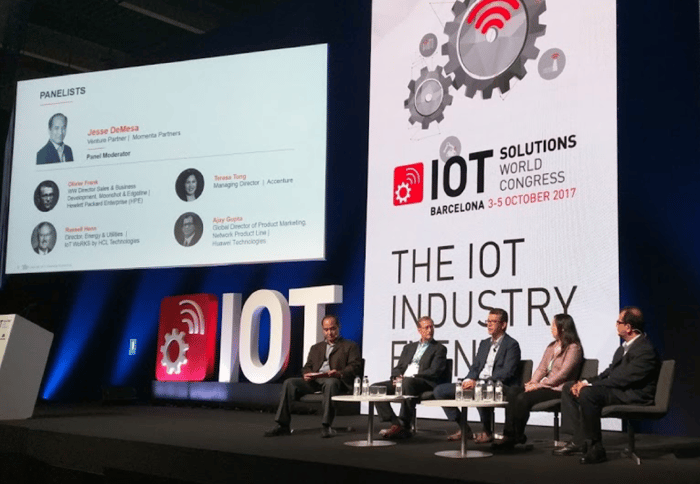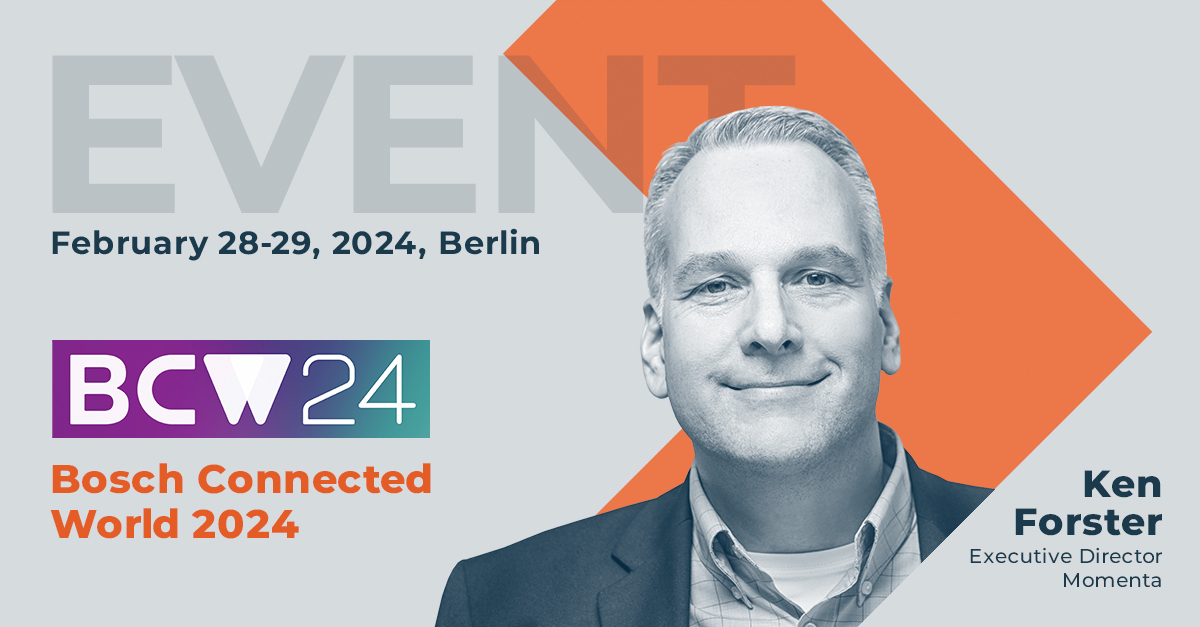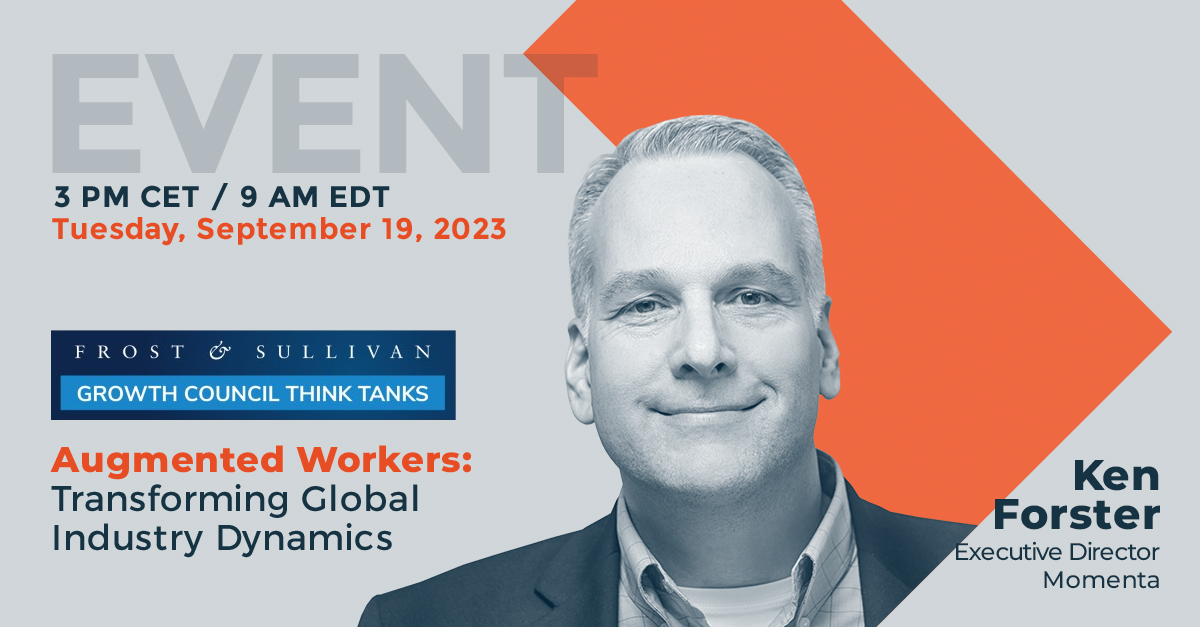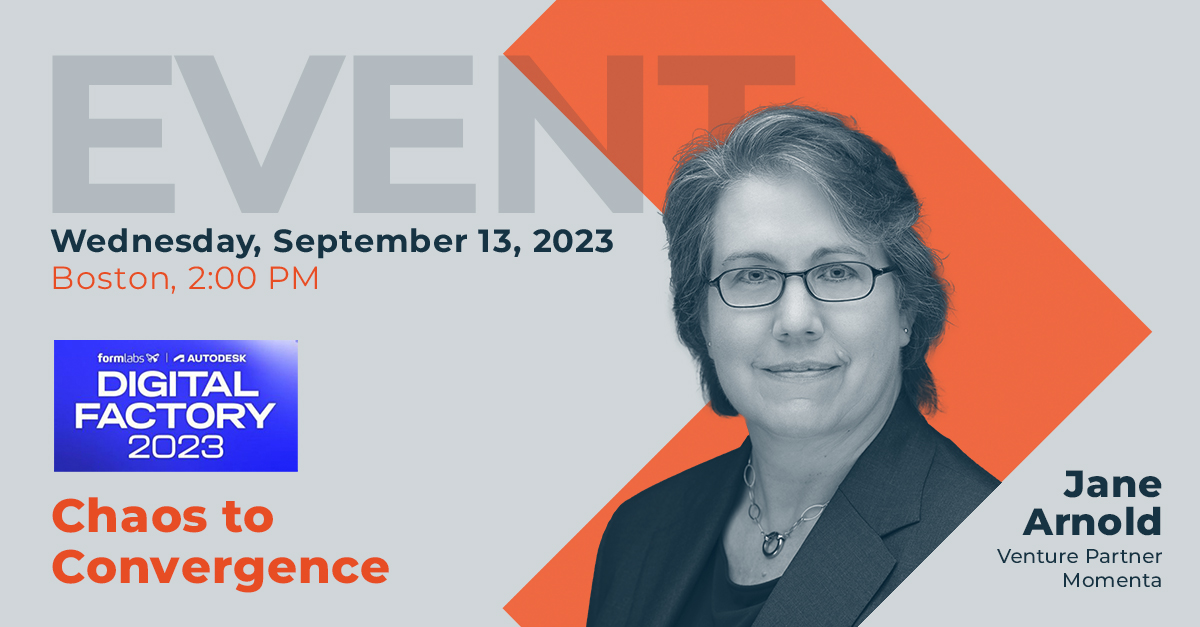Driving IIoT Momenta at IoT World Congress
Ed Maguire

Momenta gets into the thick of IIoT at IoT World Congress
Momenta recently attended IoT World Congress in Barcelona, using the opportunity to showcase three portfolio companies: RevTwo, Thingstream and Expeto. RevTwo showcased its Smarter Support platform with its AI-powered Answerbot. Expeto showcased its LTE Network-as-a-Service offerings.
|
|
According to Dale Calder |
“Having participated in the IoT industry for over 20 years (yes, that is possible), it was a pleasure to see the progress highlighted last week at IoT World Congress in Barcelona. The maturity and diversity of the business cases on display along with the exposure to the latest advances in technology were a shot in the arm for anyone engaged in the industry.”
Thingstream has launched its low-power offerings based on the near-ubiquitous USSD technology used globally by GSM networks to associate cell phones with towers. We were pleased to be able to connect the company with a diverse range of attendees.
|
|
Neil Hamilton
|
“We understood Momenta are connected to the IIoT ecosystem, however we didn’t expect to meet almost all of them during the congress!”
See our Insight Vector series interviewing Neil Hamilton of Thingstream, Dale Calder of RevTwo part one and part two, and Ryley McKenzie of Expeto.
Momenta-hosted Edge Computing panel highlights utility challenges
Jesse DeMesa hosted a panel session on Edge Computing with Olivier Frank from HPE, Russell Henn from HCL, Teresa Tung from Accenture and Ajay Gupta from Huawei. The panel covered the diversity of different types of edge devices, which can be things, devices, a windmill or other type of gateway.

Huawei has been using edge devices for smart city implementations using a lamp controller on every lamppost whose communications use NB-IoT protocol. Teresa Tung highlighted how in upstream oil and gas, rigs may not have connectivity and data may need be accessed literally over the air by a helicopter over the rig. HPE is measuring gas turbines to eliminate Type 1 errors (fixing assets unnecessarily). It’s easy to start solving efficiency problems at the edge. The challenge for edge computing is the need to process massive amounts of data (such as for an automobile) with very low latency for analytics. Security issues can extend to exploits for DDoS attacks, and data privacy is a challenge as well. Providing sandboxed environments is a way to improve the success of projects. In terms of choices. there many more types of suppliers than in traditional IT.
In general utilities are in early stages of IoT adoption. Historically they have chosen proprietary sensors that are highly secure, not IP based. Utilities are concerned about security, reliability and connectivity. IoT will supplement that. Interoperability is a challenge, however the panelists believed there will be partnerships similar to Wintel that will emerge and that the Industrial Internet Consortium standards can help with security and manageability.
The potential for data analytics in focus on Momenta hosted panel
Jesse DeMesa hosted another panel discussion with Tom Pollock, Head of Information Management with Northern Gas Networks, who are undergoing a massive overhaul of their IT systems. Northern Gas is asset heavy, with 35,000 miles of pipeline – but data is the biggest untapped asset. The biggest challenge is information management to prepare data for analysis. A data analytics project was sold successfully to the CEO based on business outcome, not even mentioning IT. The vision was the hook for engagement. Utilities have a complex array of challenges- in a project with SAP, Northern Gas had 150 different systems of record doing many of the same things. The modular nature of new platforms makes it easier to spin up a solution without having deep analytics experience.
Also on the panel was Andrew Faasen, Commercial Manager of Public Utilities for Xylem, a leading company in water solutions using digital technologies to manage the whole life cycle of water. In 2000, Xylem started to connect its products, and worked with utility customers who were able to reduce capital expenditure, saving over $1.2 million on average. Most customers don’t even have an idea of what data they have. Data sharing is still an obstacle for utilities, which don’t want to share the data with water boards.
Ultimately the Congress was a great opportunity to get an accurate picture of the health of IoT across the enterprise and industrial landscape as well as gain an understanding of future predictions and trends.





